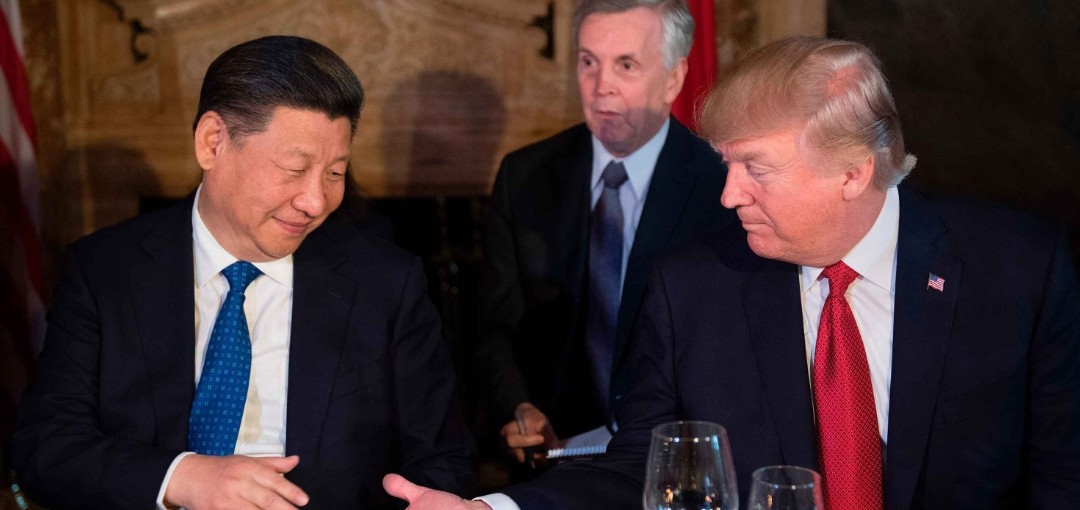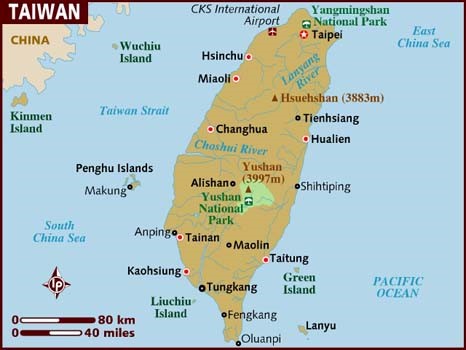One China policy
November 9, 2017 | Expert Insights

In his official visit to Beijing, US President Donald Trump has struck a warmer tone regarding his views on China and has affirmed his dedication to the “One China” policy.
The US President is currently on a five nation tour to Asia.
Background
United States and China are two of largest economies in the world. Both countries consider the other as a partner in trade and an adversary in geopolitics.
Diplomatic relations between US and China was first established in 1844 with the Treaty of Wanghia. This agreement allowed the US to trade in Chinese ports. After the Qing Dynasty was overthrown, in 1911, US recognized the legitimacy of the Republic of China (ROC) government.
When civil war broke out in 1945, between Communist Party of China (CPC) and the ROC, the US supported ROC. CPC gradually gained control of the mainland and this led to the formation of People’s Republic of China. By the 1970s, US realized the geopolitical compulsion to establish relations with PRC and officially recognized the government. It continued its unofficial support to Taiwan through various trade and military deals
The two countries have established a robust framework of trade. Currently, the US-China trade relationship supports around 2.6 million jobs in the United States. In 2015, China purchased $165 billion in goods and services from the United States in 2015
After Japan, China is the US’ biggest overseas creditor. It’s holdings of US debt is around $1.12 trillion dollars. US President Donald Trump has previously been a critic of China. He blamed the country for loss of jobs within the US.
Taiwan
Taiwan is an Island, which is a highly controversial region in Asia. Even though Taiwan is considered a province in “Greater China,” it is largely an independent state. The ambiguity can be traced back to 1927, when the seeds were sown for a civil war between Kuomintang (KMT)-led government of the Republic of China, and the Communist Party of China (CPC). Both parties wrestled for control for China. While the civil war lasted between 1927 and 1950, the main phase is considered to be from 1945 to 1949.
One China policy
US upholds a friendly if informal relation with Taiwan and has sold billions of dollars’ worth of arms to the region. However, since 1972, all US Presidents have adhered to the “One China” policy. It is the diplomatic acknowledgement of China's position that there is only one Chinese government. Under the policy, the US recognizes and has formal ties with China. During the transition period, then President elect Donald Trump caused a minor diplomatic row with China when he spoke to Taiwanese president Tsai Ing-wen on the telephone. His administration would later state that he recognized the “One China” policy.

Analysis
US President Trump is currently on an extended official visit to Asia where he is visiting countries like Japan, South Korea and China. Even though in the past he has been critical of China, he struck a warmer note during his official visit to Beijing. Regarding trade ties between the nations he said that he didn’t blame China over non-reciprocal trade. He said, “I don't blame China," Trump said during remarks to business leaders inside the Great Hall of the People. "After all, who can blame a country for being able to take advantage of another country for benefit of their citizens? I give China great credit."
"We want a vibrant trade relationship with China," Trump said. "We also want a fair and reciprocal one. Today, I discussed with President Xi the chronic imbalance in our relationship as it pertains to trade and the concrete steps it will take to solve the problem of massive trade distortion."
Trump and Chinese President Xi Jinping also announced the signing of $250bn (£190bn) worth of business deals. It is unclear how much of that figure is past deals being re-announced or simply the potential for future deals. The US President also discussed the growing threat of North Korea and possible solutions with his Chinese counterpart.
Trump also once again affirmed that he and the US administration was committed to the “One China” policy. Experts and politicians in Taiwan had expressed concern over Trump’s behavior in advance. "President Trump is very well-known for his transactional style of policymaking," says Szu-chien Hsu, president of the Taiwan Foundation for Democracy, a government-run think tank. "We have this fear that he can be shortsighted. On this trip, as long as [Trump] doesn't mention Taiwan or if the Taiwan issue is not mentioned, that's good enough.” Chinese President Xi Jinping has reportedly told Trump that Taiwan was the most important and sensitive issue regarding US-Sino relations.
Assessment
Our assessment is that as the US President has often changed his stance on geopolitical issues before, it will be hard to assess if his affirmation of the ‘One China’ policy will reassure Beijing. Taiwan, which is US’ tenth biggest trade partner is likely hoping for that Trump does not bring up with the subject of the region entirely. US politicians in the past decade have advocated for keeping up with the One China policy as long as the country can independently work with Taiwan and support the region.








Comments